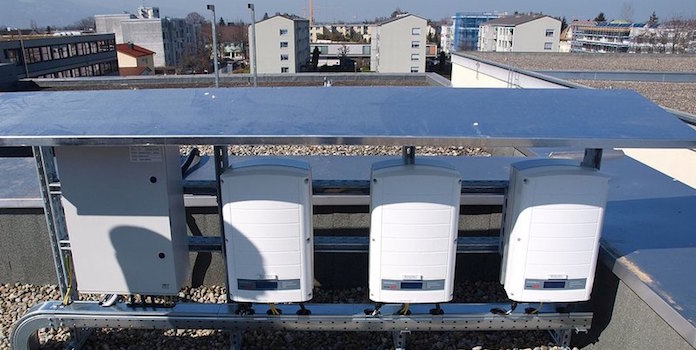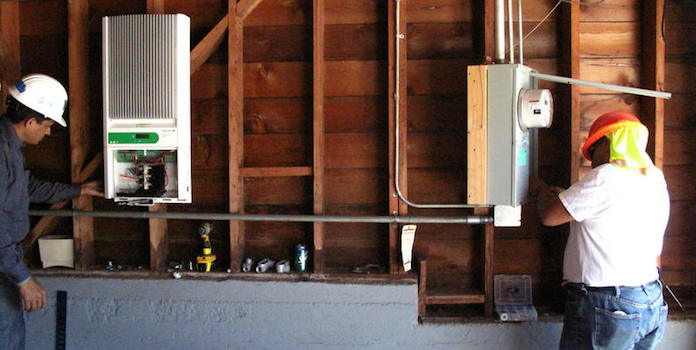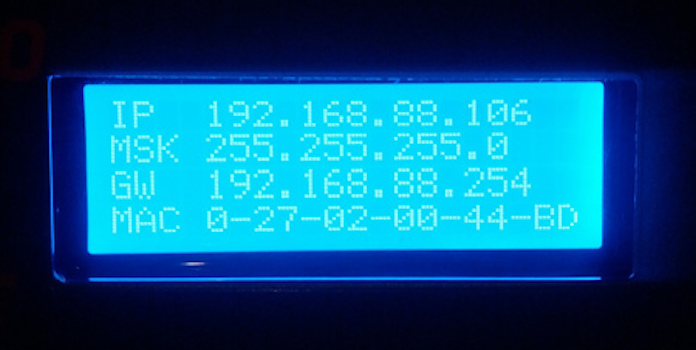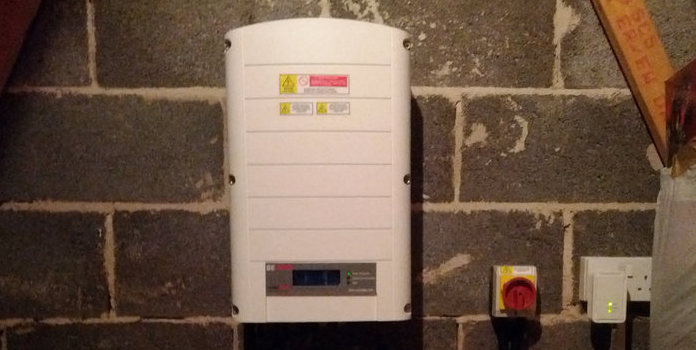What’s So Great About the SolarEdge Monitoring and Inverter System?

A SolarEdge monitoring system helps you optimize your solar power
SolarEdge is one of the biggest inverter manufacturers operating in the US. The SolarEdge monitoring systems are unique in that they perform three key functions:
First, they convert electricity coming from the panels from direct current (DC) to alternating current (AC, which is used in our homes and electrical grid), just like a more typical ‘string’ inverter.
Secondly, homeowners are able to monitor the installation’s electricity output, both as a whole and on the panel level. This allows you to easily pinpoint any panel issues that might come up in the future.
Lastly, they optimize your solar panels to produce as much electricity as possible. This last function is what really sets SolarEdge systems apart from more basic inverters – and what you’re paying a premium for.
Let’s look a bit more into how SolarEdge monitoring and inverter systems work.
What exactly is the SolarEdge monitoring and inverter system?
SolarEdge systems consist of an inverter, monitoring system, and power optimizers for each panel – the company’s main selling point. All of these components work together for the good of your installation.
What’s so great about SolarEdge’s optimizers? Well, think back to when you were putting up Christmas lights only to find that, annoyingly, they wouldn’t turn on. You then had to go through the annoying process of checking each bulb, searching for the one that’s blown.
Solar installations with standard string inverters are very similar to those Christmas lights. String inverters treat all the solar panels as one big system. If you notice you’re not producing as much electricity as you should and the problem is a malfunctioning solar panel, you’ll have to check each panel individually. This requires going up on your roof, unplugging each panel, and testing it until you find the culprit. This can be a long process of elimination.
SolarEdge utilizes a single, centralized inverter just like a ‘string inverter’, but also comes with power optimizers for each solar panel. These optimizers not only allow each panel to produce more electricity, but also monitor the panels individually. So if your installation starts producing less power, you can simply check your monitoring software (or app) and see which panel isn’t working. Pretty nice, right?
Let’s look more in-depth at each component.
The inverter
Just like any inverter, SolarEdge’s inverter converts your solar panels’ DC electricity to the more-common AC we use in our homes. All grid-connected solar installations have an inverter. It’s a basic building block of any system – a necessity.
The SolarEdge inverter is available in a couple different models, either as a single phase inverter or a three phase inverter. Generally, single-phase is found in households while three-phase is more common in industrial settings.
The single phase inverter comes in 7 different sizes to match your energy needs, from a low of 3,000 watts to a high of 11,400 watts. Inverter efficiency hovers right around 98%, which is quite good. The system comes with a fairly-standard 12-year warranty (extendable to 20 or 25 years).
All in all, the SolarEdge inverter is a high-quality piece of equipment, though it doesn’t necessarily come with any surprises.
Power optimizers
This is where SolarEdge products really shine and are the reason why people choose SolarEdge over standard ‘string’ inverters.
With SolarEdge systems, each solar panel has its own small power optimizer installed just underneath it on the roof. The optimizers handle the energy output from each panel before it goes to the inverter.
The optimizer is a DC/DC converter (as opposed to the AC/DC inverter mentioned above). DC/DC converters change the voltage of the electricity coming from the panels to maximize solar output, a process known as Maximum Power Point Tracking, or MPPT.
The amount of energy that can be harvested from a single solar panel or module changes with the amount of sunlight it receives. The electrical output that gets sent to the inverter can be optimized by finding the maximum power point, which is the point within an electrical load that will give the most useable power.
Most string inverters have some form of MPPT technology. However, with only 1 inverter for the entire solar installation, the panels are treated as a group, not individually. Power optimizers allow each panel’s MPP to be monitored individually, allowing the power optimizer to send the most efficient voltage to the inverter at any given time.
This allows you to see higher electricity production from the same amount of panels, increasing your savings and seeing a faster return on your investment.
SolarEdge monitoring
Like most monitoring systems, SolarEdge provides a web-based monitoring portal that can be accessed from your computer or phone. You can view the energy performance of your system, a map of your installation, real-time performance data, and even financial reports.
Unlike other, more basic monitoring systems though, SolarEdge’s power optimizers provide a much deeper look into your system. You’re able to detect problems on the panel-level, not just the system level. This can be a huge help if something ever goes wrong. Think a panel isn’t working? Just hop online and see which one it is!
When does SolarEdge make sense?
Beyond wanting higher energy production, homeowners typically choose SolarEdge systems when their roof doesn’t lend itself well to using a string inverter. String inverters only work when all the solar panels are facing the same direction and tilt on the roof (since the inverter treats all the panels as one big system).
If you have multiple small roof areas, a string inverter simply isn’t an option. Thankfully, we now have power optimizers (and micro inverters) available!
Since power optimizers work on the panel-level, you can theoretically install each panel at a different angle or tilt and be totally fine. You’re no longer bound to just one section of your roof. You can put 5 panels facing west over your garage, 3 panels facing east on the first-floor roof, and 6 panels facing south on the top floor.
SolarEdge power optimizers are incredibly convenient. Of course, you’ve got to pay for this convenience, leading us to ask the question:
How much does SolarEdge cost?
We’ve already mentioned that most homeowners have a string inverter for their solar installation. These are cost-effective, reliable, and work extremely well in most situations. If you want to eke out as much power as possible, or your roof doesn’t lend itself to string inverters, certainly check out SolarEdge – but be aware that your initial investment will likely be much higher.
We compared the costs of power optimizers vs string inverters in our article What Solar Power Inverter Should You Get For Your PV System? and found that power optimizers will likely add another $400 to $800 to your total installation cost. Of course, this can vary by installer.
Before you decide on a SolarEdge system, talk to a few installers to make sure it’s the best decision. It might be that a string inverter will produce almost as much electricity for a lot less money!
Final word on SolarEdge monitoring and inverter systems
SolarEdge is a well-respected inverter manufacturer creating a unique product for the solar industry. Their power optimizers allow you to squeeze out as much electricity from your system as possible, increasing your savings and leading to a faster ROI.
However, SolarEdge systems typically cost more than installations with a string inverter, so do your cost and savings calculations before deciding which one is right for you. Solar installers typically offer string inverters, SolarEdge, and microinverters, so call up a few and discuss what’s best for your roof.
Do you have a SolarEdge system? Tell us your experience in the comments below!
Image Credits under CC License via Flickr – 2, 3, 4 & Wikimedia – 1



